
Danainae is a subfamily of the family Nymphalidae, the brush-footed butterflies. It includes the Daniadae, or milkweed butterflies, who lay their eggs on various milkweeds on which their larvae (caterpillars) feed, as well as the clearwing butterflies (Ithomiini), and the tellervini.

The Nymphalidae are the largest family of butterflies, with more than 6,000 species distributed throughout most of the world. Belonging to the superfamily Papilionoidea, they are usually medium-sized to large butterflies. Most species have a reduced pair of forelegs and many hold their colourful wings flat when resting. They are also called brush-footed butterflies or four-footed butterflies, because they are known to stand on only four legs while the other two are curled up; in some species, these forelegs have a brush-like set of hairs, which gives this family its other common name. Many species are brightly coloured and include popular species such as the emperors, monarch butterfly, admirals, tortoiseshells, and fritillaries. However, the under wings are, in contrast, often dull and in some species look remarkably like dead leaves, or are much paler, producing a cryptic effect that helps the butterflies blend into their surroundings.

The superfamily Papilionoidea contains all the butterflies except for the moth-like Hedyloidea.

The Satyrini is one of the tribes of the subfamily Satyrinae. It includes about 2200 species and is therefore the largest tribe in the subfamily which comprises 2500 species.
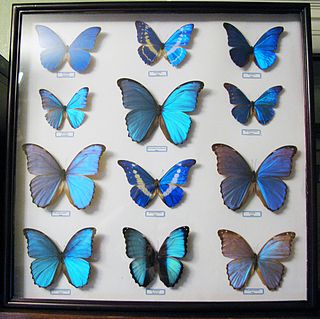
The Morphinae are a subfamily of Nymphalidae butterflies that includes the morphos, the owl butterflies (Caligo), and related lineages. It is either considered a sister group of the Satyrinae, or disassembled and included therein.

Ornithoptera victoriae, the Queen Victoria's birdwing, is a birdwing butterfly of the family Papilionidae, found in the Solomon Islands and Papua New Guinea.
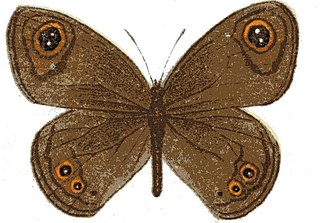
Neita is a genus of butterflies from the subfamily Satyrinae in the family Nymphalidae.
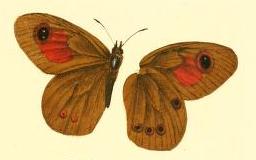
Neita neita, the Neita brown, is a butterfly of the family Nymphalidae. It is found in South Africa in several isolated populations in grassland and grassy savanna covered hillsides from Eastern Cape into KwaZulu-Natal, Swaziland, Mpumalanga, Limpopo and North West.
Neita lotenia, the Loteni brown, is a butterfly of the family Nymphalidae. It is found in South Africa on grassy mountain slopes on high altitude grasslands along the southern and south-eastern KwaZulu-Natal and Lesotho part of the Drakensberg.

Neita durbani, or D'Urban's brown, is a butterfly of the family Nymphalidae. It is found in South Africa in scattered populations in grasslands in the Eastern Cape and grassy mountain slopes at medium altitude from the Camdeboo Mountains along the escarpment to Bedford and Stutterheim, south to Grahamstown, and north to the Dordrecht Kloof and Jamestown.
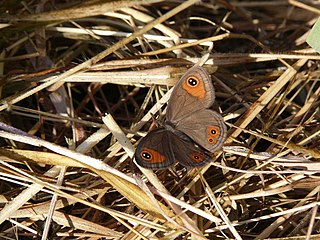
Neita extensa, is a butterfly of the family Nymphalidae. It is found in South Africa from Mpumalanga to Limpopo and further north to Zimbabwe.

Mashuna mashuna, the Mashuna ringlet, is a butterfly in the family Nymphalidae. It is found in Zimbabwe. The habitat consists of marshy areas in savanna and grassland.
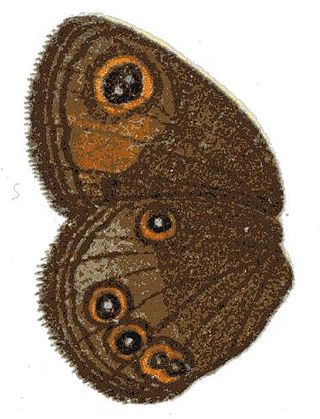
Neocoenyra duplex is a butterfly in the family Nymphalidae. It is found in southern Ethiopia, Somalia, Kenya, Uganda, Rwanda, the eastern part of the Democratic Republic of the Congo and northern Tanzania. The habitat consists of grassy savanna.
Neocoenyra fuligo is a butterfly in the family Nymphalidae. It is found in central Tanzania. The habitat consists of montane grassland at altitudes between 2,000 and 2,100 meters.

Neocoenyra fulleborni is a butterfly in the family Nymphalidae. It is found in southern Tanzania. The habitat consists of submontane and montane grassland and shrubland at altitudes between 1,500 and 1,800 meters.
Neita orbipalus is a butterfly in the family Nymphalidae. It is found in Tanzania.
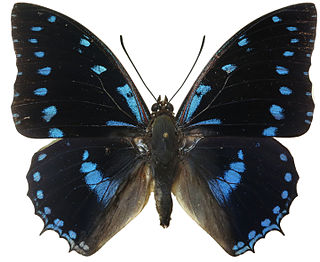
Charaxes ameliae, the blue-spotted charaxes, is a butterfly in the family Nymphalidae. It is found in Guinea, Sierra Leone, Liberia, Ivory Coast, Ghana, Togo, Nigeria, Cameroon, Gabon, the Republic of the Congo, the Central African Republic, the Democratic Republic of the Congo, Uganda, Kenya, Zambia, Tanzania and Malawi.

Cigaritis victoriae, the Victoria's bar or Victoria silverline, is a butterfly in the family Lycaenidae. It is found in southern and eastern Kenya, Tanzania, Malawi, Mozambique and eastern Zimbabwe. The habitat consists of savanna.

Lepidochrysops victoriae, the Victoria blue or Lake Victoria giant Cupid, is a butterfly in the family Lycaenidae.
Micropentila victoriae, the Victoria dots, is a butterfly in the family Lycaenidae. It is found in the Democratic Republic of the Congo, Uganda, western Kenya and north-western Tanzania. The habitat consists of primary forests.















